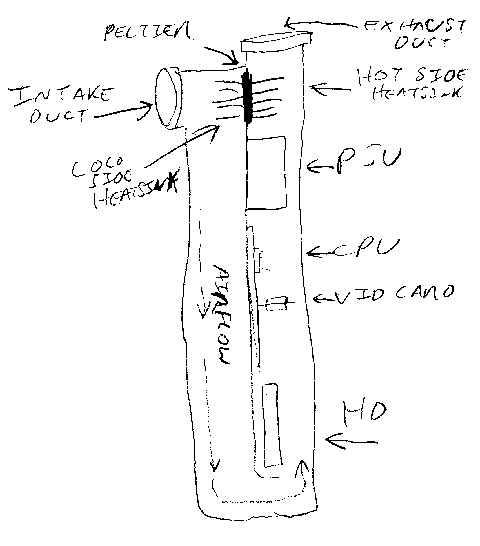I've been playing with an idea for using a Peltier with two heatsinks, as a few have suggested above. The twist I want to build the whole rig into a sort of "chimney", letting the hot air's natural tendency to rise in concert with the cold air's natural tendency to fall in an attempt to create some free, fanless airflow. The hot side of the peltier sits at the very top of the chimney, adding extra heat to the air
after it's already passed over all the pc components, because hotter air will rise faster. Meanwhile, the cold side of the peltier sits at the top of an intake duct, cooling the incoming air as it passes, and that cooled air naturally falling. The hope is that the free, silent, cooled airflow this creates can eliminate one, two, or more of the traditional fans, if the rest of the system is designed properly. In case my description is hard to follow, I'm attaching a quick drawing I just did. Nothing is to scale, this is just to illustrate the concept. No fair laughing at my drawing/handwriting, either.


The problem I'm struggling with is, you can't use any kind of heatpipe on the cold side, since the thing that makes heatpipes work is a heat source boiling the liquid inside. That certainly won't be happening on the cold side! So, plain fins on the cold side, but what I'm wondering is, is is still a good idea to use heatpipes on the hot side? Is it a problem with peltiers if the heat/cool dissapation is out of balance?
Of course, it's all academic right now for me; I haven't got the funds or the time to tackle a project like this any time soon. Besides, I'm still fiddling with my P180 project. But it's a fun concept to play around with.

